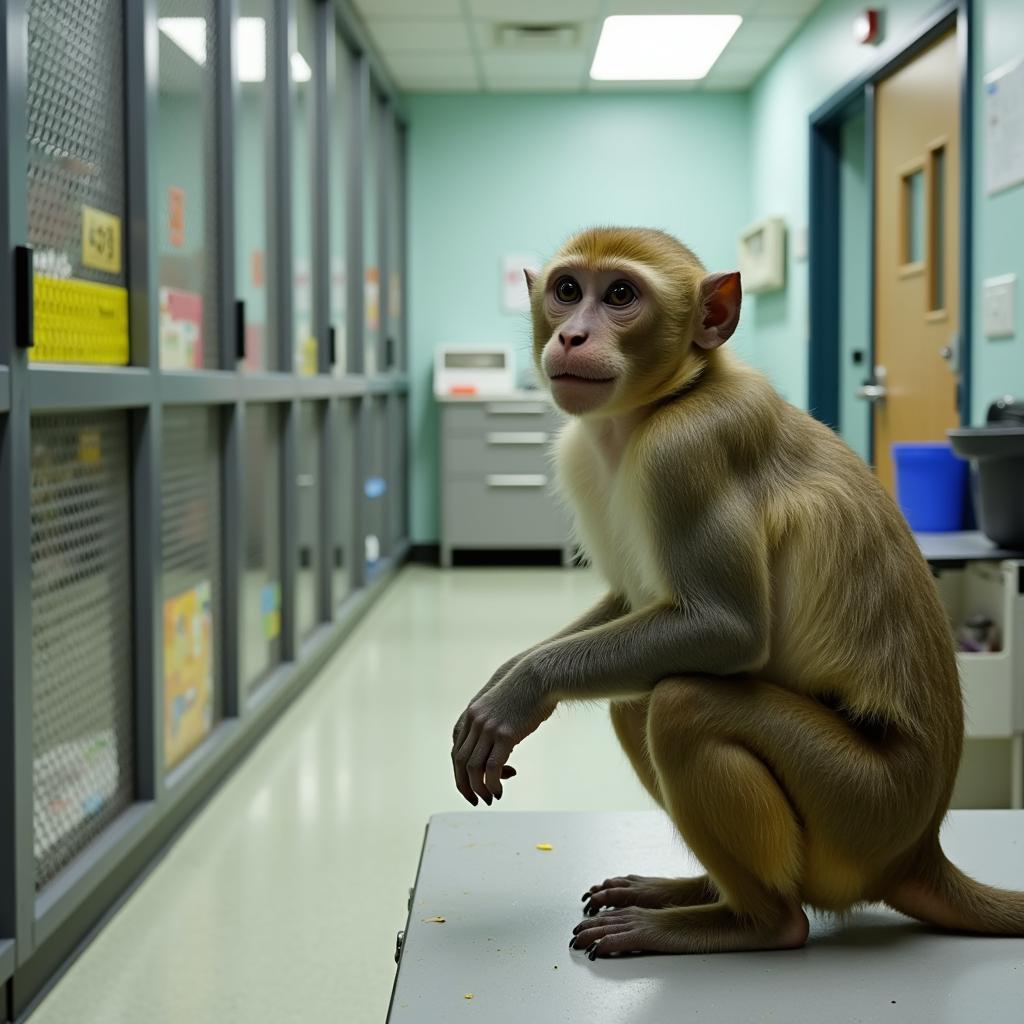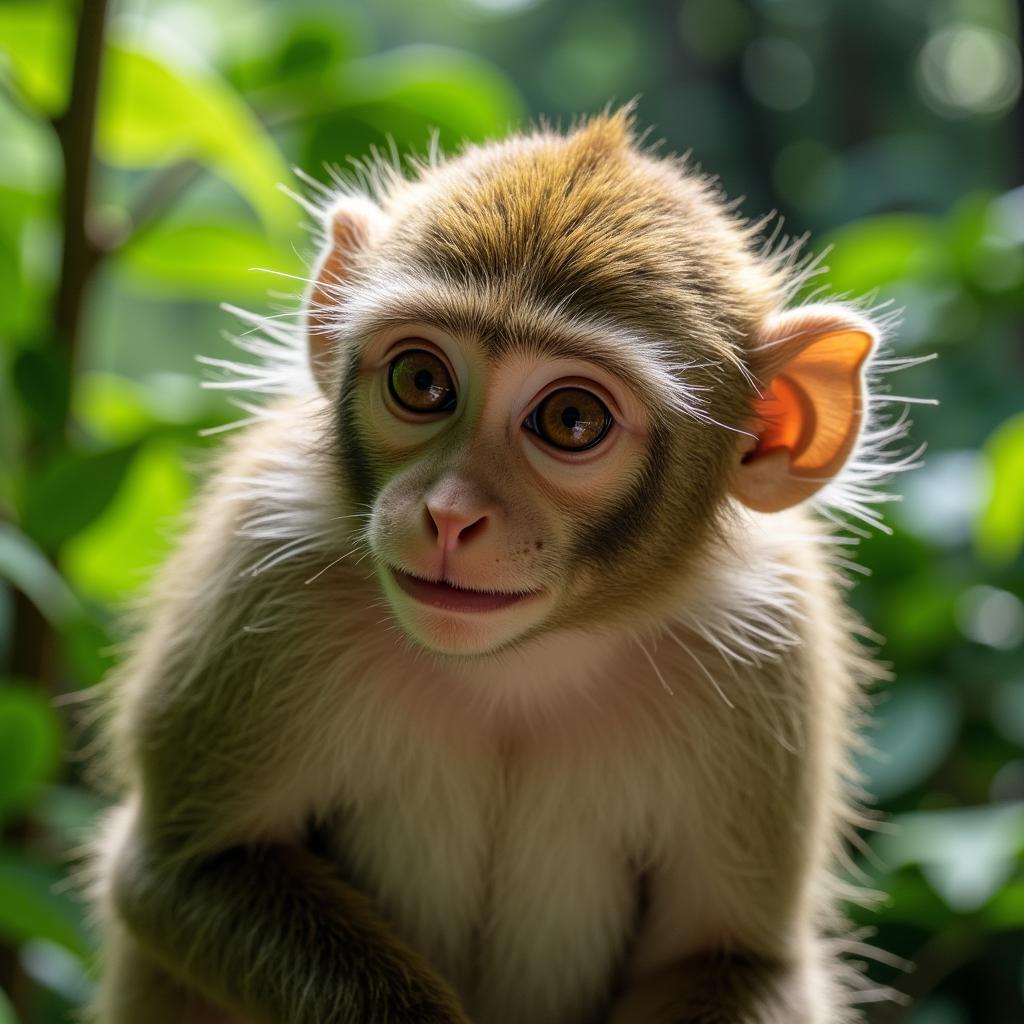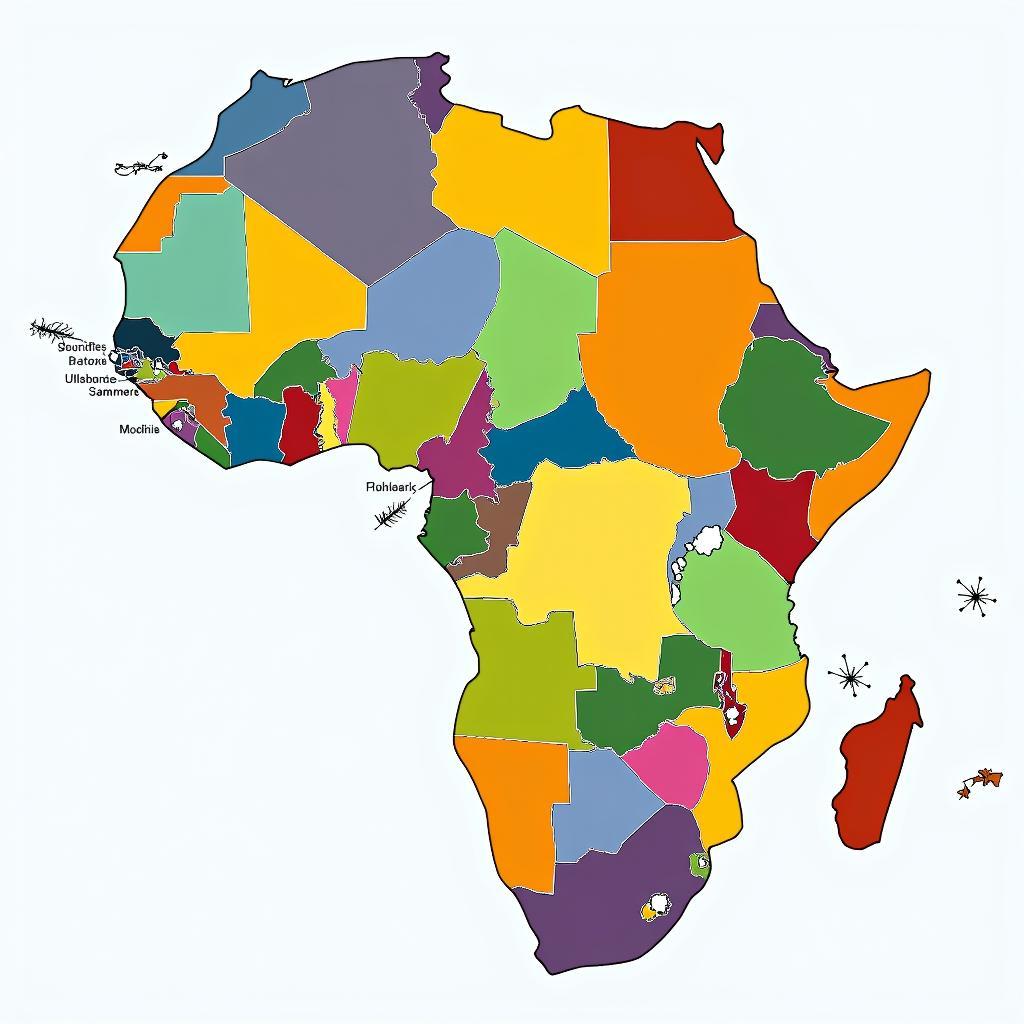Unveiling the African Green Monkey: A Primate of Significance
The African Green Monkey, also known as the vervet monkey, is a captivating primate native to sub-Saharan Africa. These intelligent creatures play a vital role in their ecosystems and have also contributed significantly to scientific research. Let’s delve deeper into the fascinating world of these intriguing primates.
The African green monkey is easily recognizable by its distinctive olive-green fur, which blends seamlessly with its arboreal habitat. These monkeys are highly social animals, living in complex multi-generational troops with intricate social hierarchies and communication systems. Their diet primarily consists of fruits, leaves, seeds, and occasionally insects and small vertebrates. african green monkey kidney cells in vaccines This adaptability makes them successful in a variety of environments, ranging from savannas to forests.
Habitat and Distribution of the African Green Monkey
The African green monkey boasts a wide distribution across sub-Saharan Africa, thriving in diverse habitats. They are highly adaptable, occupying savannas, woodlands, and even coastal forests. Their agility and arboreal nature allow them to navigate the treetops with ease, while their terrestrial foraging skills enable them to exploit ground-level resources. This adaptability has contributed significantly to their widespread success.
Social Structure and Behavior
African green monkeys exhibit complex social structures, living in troops that can number up to 70 individuals. Within these troops, there are distinct social hierarchies, often matrilineal, with dominant females holding significant influence. Communication within the troop is highly sophisticated, involving a variety of vocalizations, facial expressions, and body postures. These complex interactions contribute to the overall cohesion and survival of the group.
Diet and Foraging Strategies
As opportunistic omnivores, African green monkeys exhibit a diverse diet. Fruits, leaves, and seeds form the bulk of their food intake, supplemented by insects, small vertebrates, and even eggs. Their adaptable foraging strategies allow them to exploit a wide range of food sources, contributing to their resilience in various environments.
The African Green Monkey in Scientific Research: Vaccines and Beyond
The African green monkey has played a significant role in scientific research, particularly in the development of vaccines and the study of various diseases. Their physiological similarities to humans make them valuable models for understanding human health and disease. african green monkey mid50 Research involving African green monkeys has led to significant advancements in medical science.
Why are African Green Monkeys Used in Research?
The use of African green monkeys in research stems from their close genetic relationship to humans. This proximity translates into physiological similarities that make them valuable subjects for studying human diseases and developing treatments.
Dr. Anika Patel, Primatologist and Conservationist, explains: “The African green monkey’s contribution to scientific advancements is undeniable. Their role in vaccine development, for instance, has been instrumental in protecting global health.”
 African Green Monkey in a Research Setting
African Green Monkey in a Research Setting
Conservation Status and Threats
While the African green monkey is currently not considered endangered, it faces increasing threats due to habitat loss, human encroachment, and the illegal pet trade. Conservation efforts are crucial to ensure the long-term survival of this vital species. african green monkey kidney Protecting their habitats and combating illegal wildlife trade are essential for their continued existence.
How Can We Help Protect the African Green Monkey?
Supporting conservation organizations, promoting sustainable practices, and raising awareness about the importance of biodiversity are all crucial steps in safeguarding the future of the African green monkey.
Professor Charles Mbogo, Wildlife Biologist, adds, “The African green monkey is an integral part of the African ecosystem. Its decline would have cascading effects on the biodiversity of the region. Conservation is not just about saving a species; it’s about preserving the delicate balance of nature.”
The African Green Monkey: A Look Ahead
The African green monkey remains a species of great scientific and ecological significance. Understanding their biology, behavior, and the threats they face is crucial for their long-term survival. Continued research and conservation efforts are vital for protecting this fascinating primate and its contribution to the rich tapestry of African wildlife. african green monkey vaccine By working together, we can ensure the future of this remarkable species.
 African Green Monkey in its Natural Habitat
African Green Monkey in its Natural Habitat
In conclusion, the African green monkey is a remarkable primate that plays a vital role in its ecosystem and has contributed significantly to scientific research. Protecting this fascinating species requires a concerted effort to address the threats it faces and ensure its long-term survival.
FAQ
- What is the scientific name of the African green monkey? Chlorocebus pygerythrus
- What is the average lifespan of an African green monkey? Around 15-20 years in the wild.
- What is the social structure of African green monkeys like? They live in multi-generational troops with complex social hierarchies.
- What are the primary threats to African green monkeys? Habitat loss, human encroachment, and the illegal pet trade.
- What role do African green monkeys play in scientific research? They are valuable models for studying human diseases and developing treatments, particularly vaccines.
- What do African green monkeys eat? They are omnivores, primarily eating fruits, leaves, seeds, insects, and small vertebrates.
- Where are African green monkeys found? They are native to sub-Saharan Africa.
Further questions to consider
- What are the ethical implications of using African green monkeys in research?
- What are the specific conservation efforts being implemented to protect African green monkeys?
- How does the African green monkey’s social behavior compare to other primate species?
For further information on related topics, please explore our other articles on african green monkey kidney cells.
Need more assistance? Contact us 24/7:
Phone: +255768904061
Email: kaka.mag@gmail.com
Address: Mbarali DC Mawindi, Kangaga, Tanzania.
Our dedicated customer support team is always ready to help.

